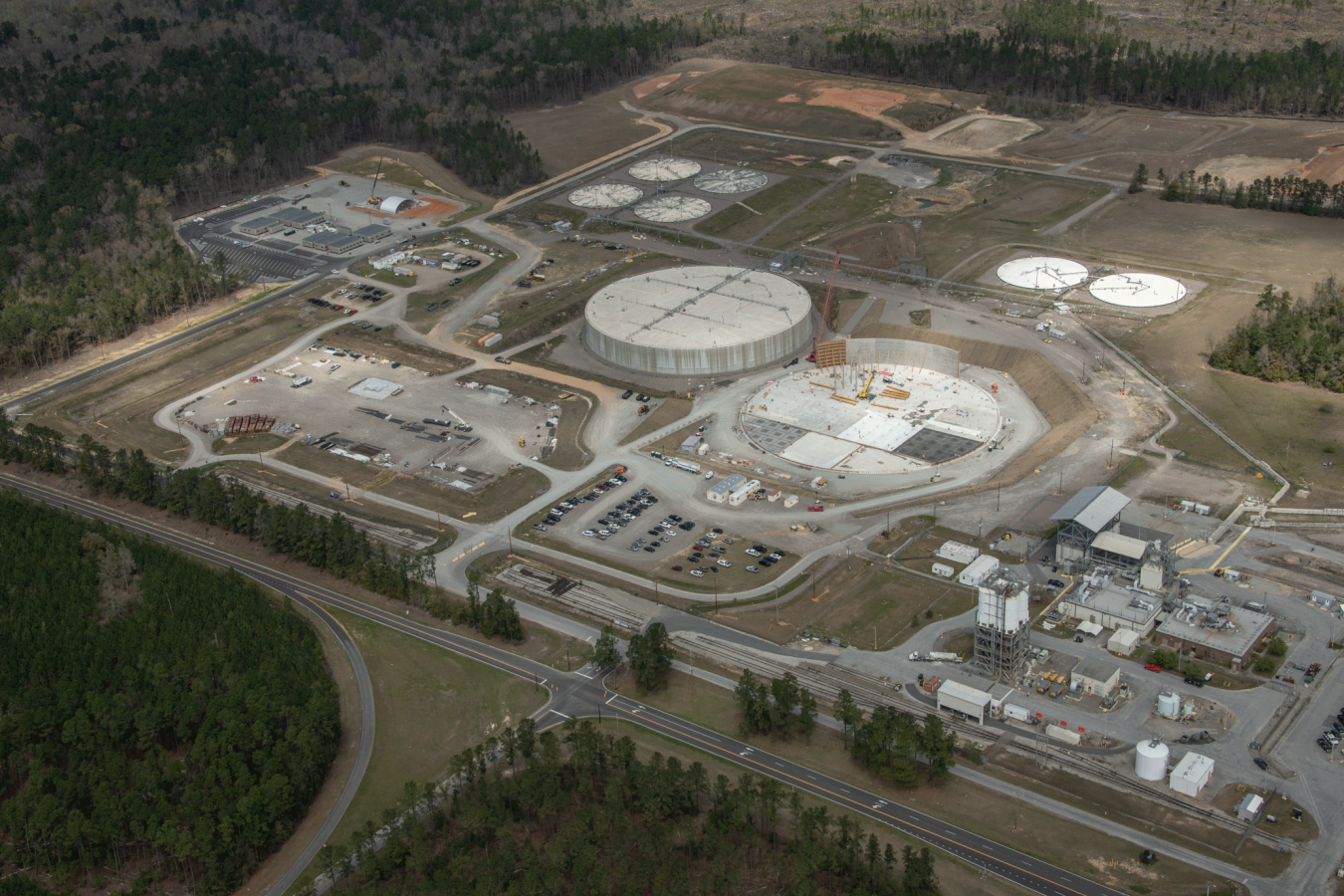
This includes both the solidification of highly radioactive liquid wastes stored in SRS’s tank farms and disposal of liquid low-level waste generated as a by-product of the separations process and tank farm operations. This low-level waste is treated in the Effluent Treatment Facility.
High-activity liquid waste is generated at SRS as by-products from the processing of nuclear materials for national defense, research and medical programs. The waste, totaling about 36 million gallons, is currently stored in 49 underground carbon-steel waste tanks grouped into two “tank farms” at SRS.
While the waste is stored in the tanks, it separates into two parts: a sludge that settles on the bottom of the tank, and a liquid supernate that resides on top of the sludge. The waste is reduced to about 30 percent of its original volume by evaporation. The condensed evaporator “overheads" are transferred to the Effluent Treatment Project for final cleanup prior to release to the environment. As the concentrate cools a portion of it crystallizes forming solid saltcake. The concentrated supernate and saltcake are less mobile and therefore less likely to escape to the environment in the event of a tank crack or leak.
SRS currently has three evaporators operating.
The Effluent Treatment Project, located in H Area, treats the low-level radioactive wastewater that was formerly sent to seepage basins. Treated streams include evaporator overheads, segregated cooling water, contaminated surface water runoff, transfer line catch tank streams and others.
- Began operating in 1988
- Processes approximately 20 million gallons of wastewater per year
- Treatment processes include pH adjustment, filtration, organic removal, reverse osmosis and ion exchange
- Treated streams are released to a permitted outfall

